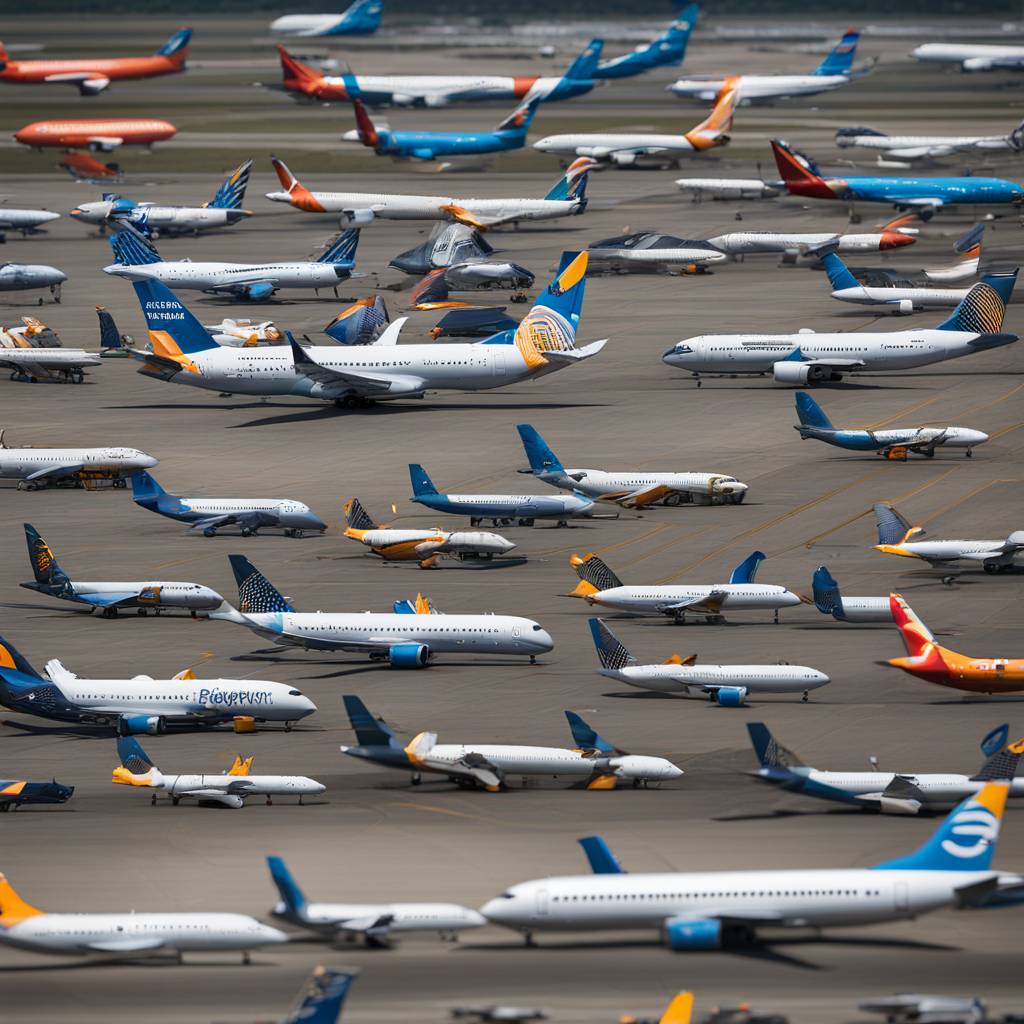Monday’s solar eclipse caused disruptions at smaller airports across the country, with the Federal Aviation Administration reporting temporary halts in arriving flights at airports from Burlington, Vermont, to southern Illinois. This high demand for prime views of the phenomenon led to airplane parking jams on the ground at these smaller airports, where traffic adjustments were necessary to avoid chaos. Airports like Southern Illinois Airport in Murphysboro, Illinois, had to close runways to park planes due to the overwhelming number of aircraft seeking a view of the eclipse, reaching record numbers for the airport.
Patrick Leahy Burlington International Airport in Vermont also saw an increase in general aviation planes, with between 100 and 130 expected to arrive on Monday. This influx of aircraft, combined with some scheduled commercial passenger jet traffic, created a hectic atmosphere for airport staff. The eclipse was treated as a major event by the FAA, which had warned pilots about possible disruptions and heavy traffic at airports along the eclipse’s path. Airlines like Delta and United capitalized on the event, offering special eclipse flights and seeing surges in bookings at cities within the eclipse’s path.
The best views of the solar eclipse in the U.S. span from Texas through Illinois, Kentucky, Ohio, and up to northwestern New York and Maine, as stated by NASA. Delta Air Lines offered special eclipse flights from Dallas/Fort Worth International Airport to Detroit and Austin, Texas, to Detroit, allowing passengers to witness the eclipse from the sky. Other airlines also highlighted flights that could offer views of the eclipse along the “path of totality,” leading to increased interest and bookings at certain airports. This surge in tourism is expected to benefit hotels, house rentals, and other local businesses as tourists travel to witness the rare celestial event.
The eclipse caused significant disruptions at smaller airports like Southern Illinois Airport in Murphysboro, Illinois, where the number of arriving aircraft exceeded expectations and led to parking issues. These smaller airports had to implement traffic adjustments to accommodate the high demand for viewing the eclipse, resulting in the closure of runways and long queues of aircraft waiting to park. The FAA’s morning planning call at its command center in Warrenton, Virginia, highlighted the eclipse as a major event, along with other common obstacles like presidential travel, severe weather, or major sports and entertainment events.
Patrick Leahy Burlington International Airport in Vermont saw an increase in general aviation planes on Monday, with more anticipated to arrive to witness the eclipse. The airport staff anticipated a hectic day with the influx of aircraft, both general aviation and scheduled commercial passenger jet traffic. The FAA had issued warnings to pilots about possible disruptions and heavy traffic at various airports along the eclipse’s path, ensuring that safety and order were maintained during the celestial event. Airlines like Delta and United responded to the high demand for eclipse viewing by offering special flights and seeing a surge in bookings at airports within the eclipse’s path.
The eclipse created a tourist boom for cities within the path of totality, with hotels, house rentals, and other businesses expected to benefit from the influx of visitors. The eclipse viewing opportunity from the sky offered by airlines like Delta allowed passengers to witness the rare event from a unique vantage point. United Airlines also experienced increased bookings at airports within the eclipse’s path, indicating a strong interest in viewing the eclipse in person. Overall, the eclipse not only provided a stunning natural spectacle but also highlighted the impact of celestial events on travel and tourism, especially for smaller airports across the country.













